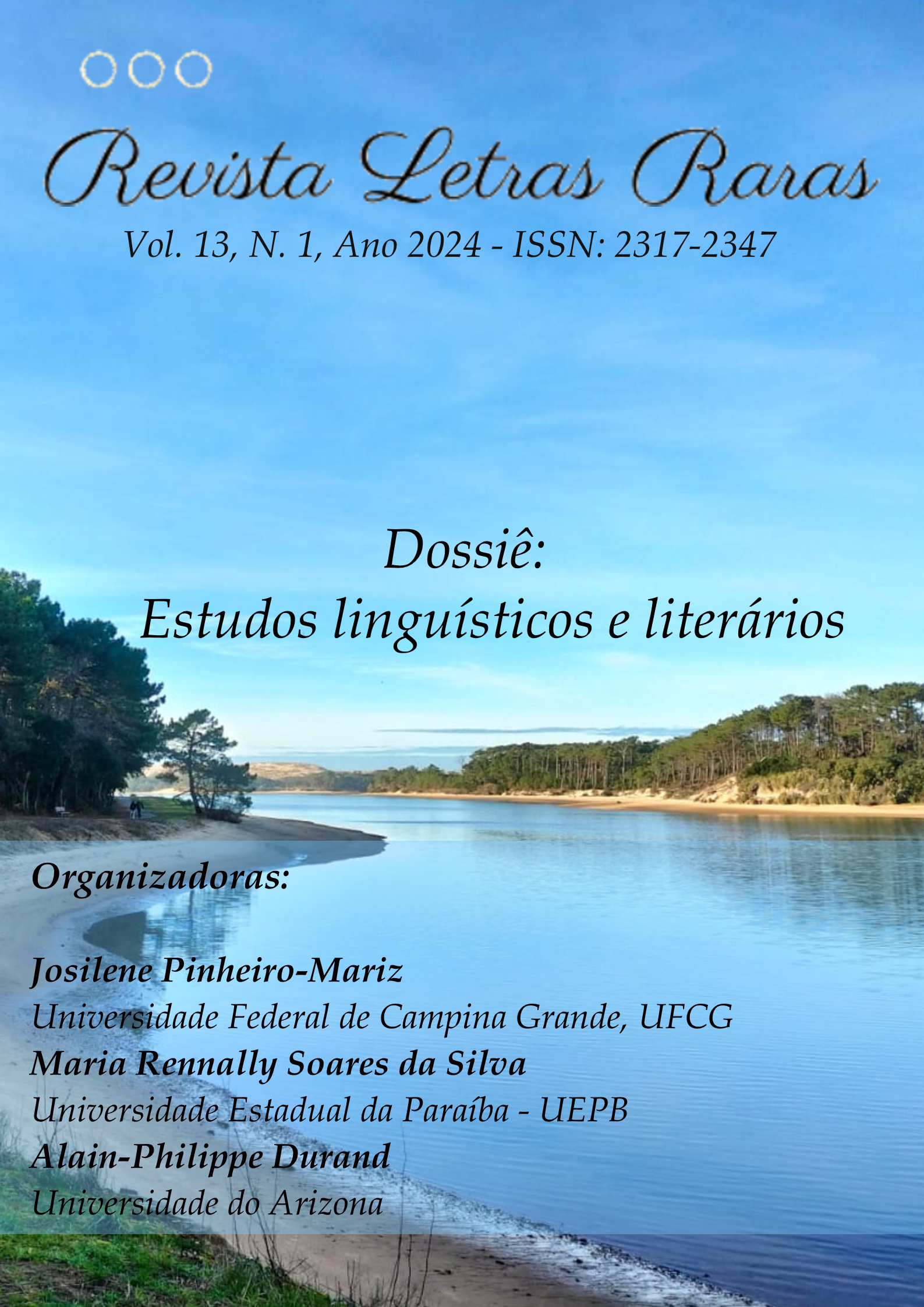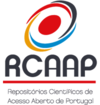Reflecting on children's literature considering translation and adaptation
DOI:
https://doi.org/10.5281/zenodo.15465554Palavras-chave:
Translation;, Adaptation; , Children’s Literature;, Culture.Resumo
Secular children’s literature which has lasted also through translation and adaptation are experienced either via oral literature or TV/books storytelling. These texts come originally from different cultural contexts and are spread by interpretations which keep the texts alive and amplify their comprehension. This paper aims at relating translation, adaptation and children’s literature, seeking to reflect on how the knowledge about translation and adaptation may be useful to consider children’s literature classic tales. Classified as a conceptual research (Williams; Chesterman, 2009), these are the main authors and their discussion areas considered as theoretical background: Jakobson (2012), Bassnett (2002), Plaza (2003) and House (2013) on translation; Katan (1999), Laraia (2001), Bassnett (2002) and Santos (2010) on culture; Hutcheon (2013) and Ribas (2014) on adaptation; and Lajolo and Zilberman (2007), Silva (2009) and Macêdo (2019) on a brief discussion about children’s literature, including the adaptation of classic tales. Coming to terms with the idea discussed, considering linguistic, aesthetic and cultural aspects, may be an enlightening resource to understand how these texts are reinterpreted in new contexts, focusing on the genre and opening space for the narratives already known by the general public to be reconstructed in new cultures in different moments of life, and valuing translation and adaptation to be considered independent from the source text from a perspective that considers new audiences and contexts.
Downloads
Referências
AGOSTINHO, C.; COELHO, R. S. Rapunzel e o quibungo. Ilustração: Walter Lara. Belo Horizonte: Mazza, 2012.
AGOSTINHO, C.; COELHO, R. S. Cinderela e Chico Rei. Ilustração: Walter Lara. Belo Horizonte: Mazza, 2015.
BASSNETT, S. Translation studies. London: Routledge, 2002.
BENJAMIN, W. The translator’s task. In: VENUTI, L (ed.). The translation studies reader. London: Routledge, 2012. p. 75-83.
BRANDÃO, A. A presença dos irmãos Grimm na literatura infantil e no folclore brasileiro. São Paulo: Instituição Brasileira de Difusão Cultural, 1995.
CRONIN, M. Translation in the digital age. Routledge, 2012.
FORMIGA, G. M. Adaptação de clássicos literários: uma história de leitura no Brasil. 2009. Tese (Doutorado em Letras) - Curso de Letras - Universidade Federal da Paraíba, João Pessoa, 2009.
GRIMM, J; GRIMM, W. Cinderela. In: AVILA, M. (org.). Contos de fadas em suas versões originais. Tradução: Felipe Lemes, Carolina Caires Coelho, Kamila França. São Paulo: Wish, 2019. p. 168-179.
GRIMM, J; GRIMM, W. Chapeuzinho Vermelho. In: _____. Contos de fadas em suas versões originais. Tradução: Felipe Lemes, Carolina Caires Coelho, Kamila França. São Paulo: Wish, 2019. p. 156-167.
HOUSE, J. Translation. Oxford: OUP, 2013.
HUTCHEON, L. A theory of adaptation. 2nd ed. London: Routledge, 2013.
JAKOBSON, R. On linguistics aspects of translation. In: VENUTI, L (ed.). The translation studies reader. London: Routledge, 2012. p. 126-131.
KATAN, D. Translating cultures: an introduction for translators, interpreters and mediators. London: Routledge, 1999.
LAJOLO, M; ZILBERMAN, R. Literatura infantil brasileira: história e histórias. 6ª ed. São Paulo: Editora Ática, 2007.
LARAIA, R. B. Cultura: um conceito antropológico. 14ª ed. Rio de Janeiro: Jorge Zahar Editor, 2001.
LOBATO, M. Reinações de Narizinho. Ilustração: Lole. São Paulo: Companhia das Letrinhas, 2019.
LOCASTRO, Virginia. Pragmatics for language educators: a sociolinguistic perspective. London: Routledge, 2013.
LUCINDO, E. S. Tradução e ensino de línguas estrangeiras. Revista Scientia Traductionis. Florianópolis: UFSC, n. 3, 2006.
MACÊDO, J. A. Princesas negras: as adaptações dos contos europeus na literatura infantil com temáticas afro-brasileiras. 2019. 160 f. (Dissertação - Mestrado em Letras) - Curso de Letras - Universidade Federal da Paraíba, João Pessoa.
NIDA, E. A.; TABER, C. The theory and practice of translation. Leiden: Brill, 1982.
NORD, C. Translating as a purposeful activity. Manchester: St. Jerome, 2007.
OITTINEN, R. Translating for children. New York & London: Garland Publishing, 2000.
PERRAULT, C. Chapeuzinho Vermelho. In: AVILA, M. (org.). Contos de fadas em suas versões originais. Tradução: Felipe Lemes, Carolina Caires Coelho, Kamila França. São Paulo: Wish, 2019. p. 156-161.
RIBAS, M. C. C. Literatura e(m) cinema: breve passeio teórico pelos bosques da adaptação. ALCEU: Revista de Comunicação da PUC-Rio, v. 14, n. 28, p. 117-128, 2014.
SANTOS, J. L. O que é cultura. São Paulo: Brasiliense, 2017.
SAPIR, E. Culture, language and personality. Berkeley, Los Angeles: University of California Press, 1956.
SILVA, A. L. Trajetória da literatura infantil: da origem histórica e do conceito mercadológico ao caráter pedagógico na atualidade. In: Revista eletrônica de graduação do UNIVEM, v. 2, n. 2, p. 135-149, 2009.
TOURY, G. Descriptive translation studies and beyond. Amsterdam and Philadelphia: Benjamins, 1995.
VOLOBUEF, K. Os irmãos Grimm: entre a magia e a erudição. In: Anais do VII painel reflexões sobre o insólito na narrativa ficcional/ II Encontro regional: o insólito como questão na narrativa ficcional. Rio de Janeiro: Dialogarts, 2011. p. 12-23.
WHORF, B. L. Language, thought and reality: selected writings. Cambridge, Mass.: The MIT Press, 1956.
ZILBERMAN, R. Introduzindo a literatura infanto-Juvenil. In: Perspectiva, Florianópolis, v. 2, n. 4, p. 98-102, 1985.
WILLIAMS, J.; CHESTERMAN, A. The map: a beginner’s guide to doing research in translation studies. Manchester: St. Jerome, 2009.
Downloads
Publicado
Como Citar
Edição
Seção
Licença
Copyright (c) 2024 Revista Letras Raras

Este trabalho está licenciado sob uma licença Creative Commons Attribution-NonCommercial 4.0 International License.







